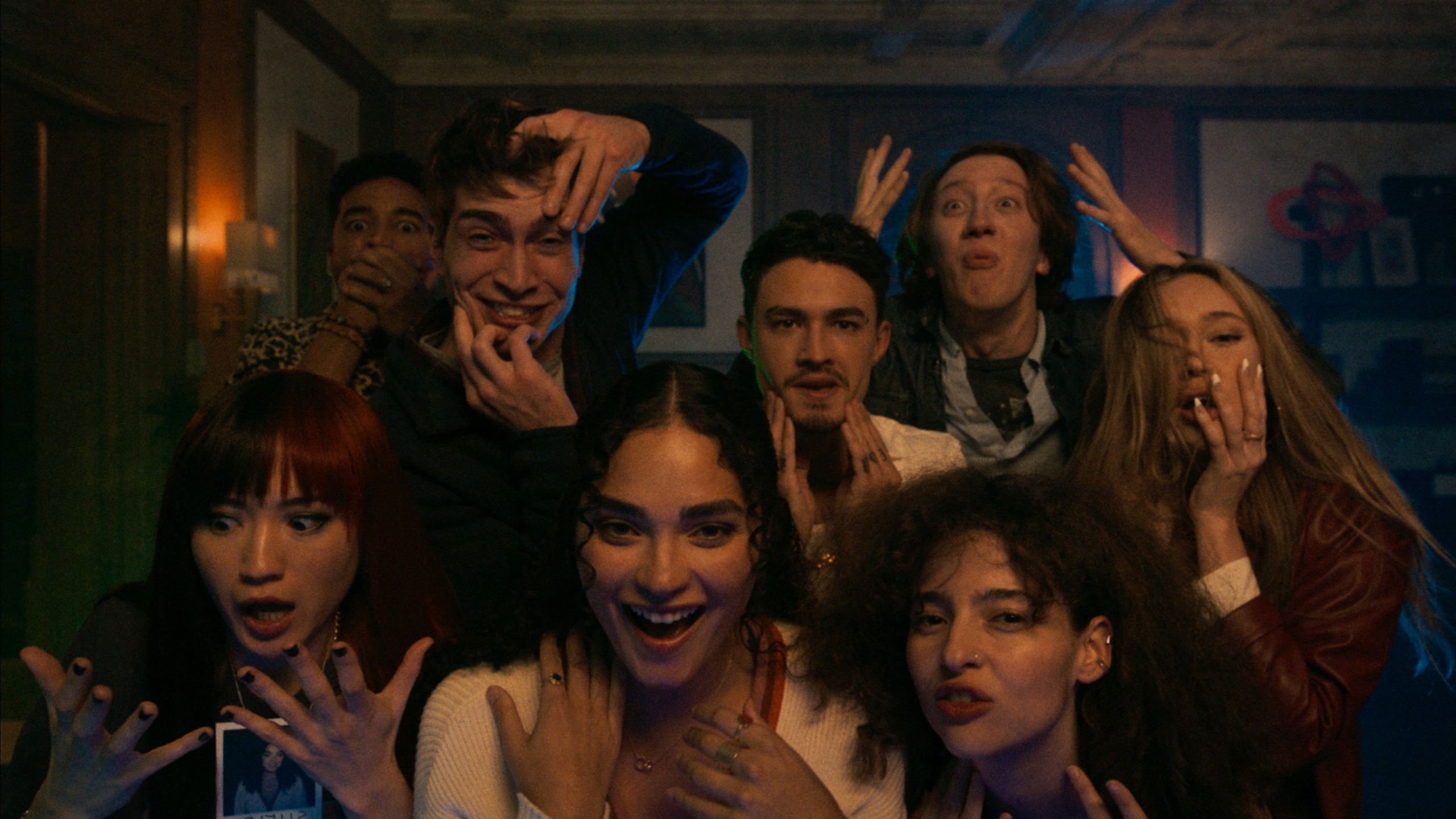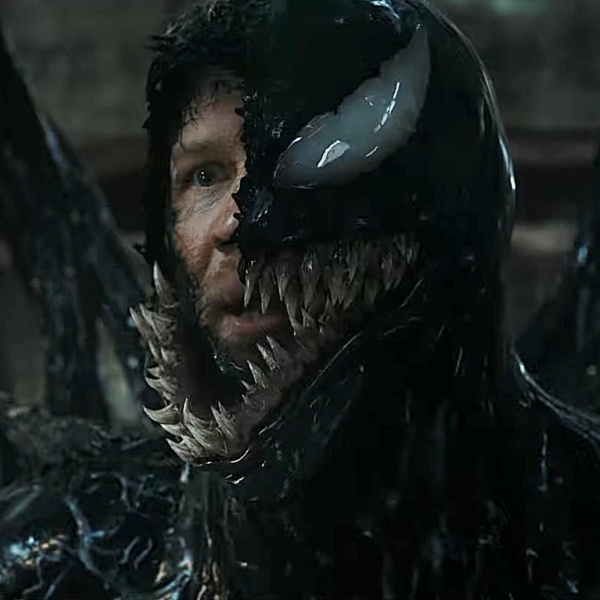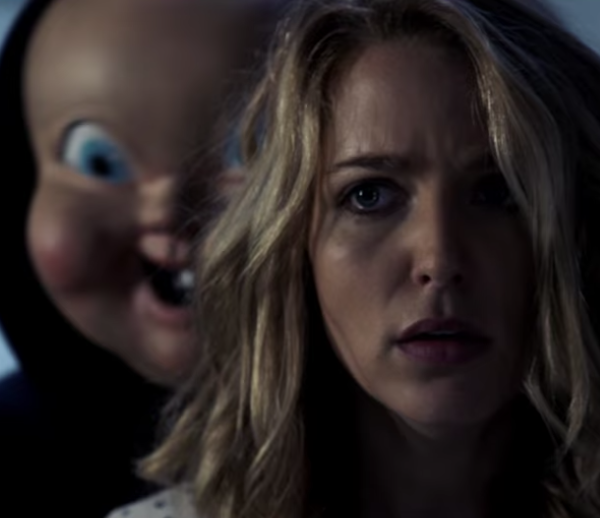The Sundance audience at The Ray Theater had no idea what to expect from “It’s What’s Inside.” The film marked a directorial debut (Greg Jardin), had exactly zero stars in the cast, and was only teased with a vague logline about some “mysterious suitcase” ruining a wedding party.
Likewise, the film’s producer William Rosenfeld (“The Peanut Butter Falcon,” “Mudbound”) didn’t know what he’d get out of the film festival’s audience. What he got from them was an “explosion” — one that both changed the film’s fortune and brought in a small fortune.
“Oh shit, it’s that kind of movie,” Rosenfeld recalled of when the audience finally realized early on what that suitcase actually contains and does to the protagonists.
Just one day after that premiere, Netflix acquired the genre-bending teen/horror/comedy/mind-fuck movie for $17 million, marking one of the biggest sales in Sundance history.
“It’s What’s Inside” launches on Netflix this Friday, October 4. Though its trailer should give some idea of what to expect (if you want one — perhaps going in blind is the best bet), the film is again poised to be a discovery: A twisty, Gen-Z-friendly movie that could become an instant top 10 hit and potentially a future cult classic.
With his big check in hand, Rosenfeld has set a new bar for the Sundance-to-streaming pipeline — but that does not mean we should every year expect another $17 million festival film. Netflix, Amazon, Apple, and Hulu aren’t writing the massive checks they used to, be they Apple’s $25 million for “CODA” in 2021 or Hulu’s $17.5 million for “Palm Springs” in 2020. Those were different times for streaming, when demand for content was high and costs weren’t being cut across the industry.
The financial windfall here is cool, but the media coverage about the money may be even more important for an independent film. Without a catchy headline, an indie movie can spend precious months on the shelf awaiting a buyer, only for traditional distributors to pass based on box-office guesses.

Rosenfeld knows this wasn’t the plan — but maybe it could be.
“I don’t want to suggest we have the magic formula, but we’re not going to make the same film (again) and scale up and play a volume game,” Rosenfeld said.
His Such Content banner values the nimbleness that comes from its relatively small size and unique funding model, and it’s not out here wasting Netflix’s $17 million either. Its slate has not ramped up, the company hasn’t expanded in head count or office space. None of its future projects — some starting production soon — have been announced, though we do know that each will blend genres in the way “It’s What’s Inside” does and also have first-time (feature) directors.
“That could explode in our faces spectacularly,” Rosenfeld said. “But if it works, we’re excited to find out and bring that to fruition.”
For “It’s What’s Inside,” Rosenfeld says he took a “backwards” approach to financing. Such Content first raised a “war chest” of capital for production and development via a small group of investors familiar with the team (and no outside funds), and the project arrived second.
The normal way works like this: Indie producers develop or land on a script, attach talent, take it to market, and hope financiers bite. Sometimes that requires setting up foreign-sales rights first — a fundraising tool maneuver that can also create a potential problem. If international rights are off the table before a film is even made (let alone screened), truly global distributors — like Netflix — may remove themselves from the bidding process.
The traditional funding process can also take forever. Rosenfeld says he didn’t want to spend up to two years “with our hat in hand trying to raise money” (or lose global rights).
In the case of “It’s What’s Inside,” the film’s budget (the producers couldn’t comment on the figures except to say it’s a low budget film) came entirely from his production banner’s pool of funds. That meant no other banks, lenders, debt, or pre-sales. The company operated more as a traditional studio and took on the full financial burden. Rosenfeld doesn’t believe many other indies would take on the full freight without offsetting at least some of the risk.
It meant “we as a company were taking a big risk, financially,” Rosenfeld said. “But it also granted us some much desired control over the fate of the project.” And he intends to take that risk again.
So when Jardin asked that the bulk of the film’s budget be used on the art direction of a sprawling and colorful mansion, the producers didn’t balk. And when Jardin needed nearly a year in post-production, Rosenfeld said “cool,” basically. Jardin was given 10 months to cut the film (he was editing and doing the VFX work himself, give him a break), do pickup shoots, and he even got an additional full day of photography — all things nearly unheard of for an indie.
“Just having financiers that are really understanding and willing to consider opening up the budget to do the film in a proper way was really inspiring and made the film better,” producer Jason Baum, Jardin’s righthand man and the film’s unit production manager, told IndieWire.
Those financiers are as unconventional as the company’s fundraising model. Rosenfeld’s partners are Bob Kapp and Riaz Rizvi, a pair of former commodities traders. They’re true Hollywood outsiders, but Rosenfeld said they were exactly who he needed in negotiations, running calculations and risk assessments like they were dealing with billion-dollar minerals transactions and not an indie film.

None of this paved an easy road for Jardin to get from start to finish, however. His script had been passed on all around town since 2016, with Baum saying it at one point involved 50 speaking parts, dozens of locations, and sprawled to 200 pages. (The final film is an audience-friendly 103 minutes.)
With no clear genre, “It’s What’s Inside” didn’t fit inside the Hollywood machine. But if it’s good enough for Colman Domingo…
It was Domingo (“Sing Sing,” “Rustin”) who first handed the script to Rosenfeld. For his efforts, Domingo gets an executive-producer credit.
“Colman Domingo’s opinion holds a lot of weight; his taste is impeccable,” Rosenfeld said. “I didn’t imagine that he would very casually say ‘just take a look.’ He smelled what we smelled.”
It smells like $17 million.






